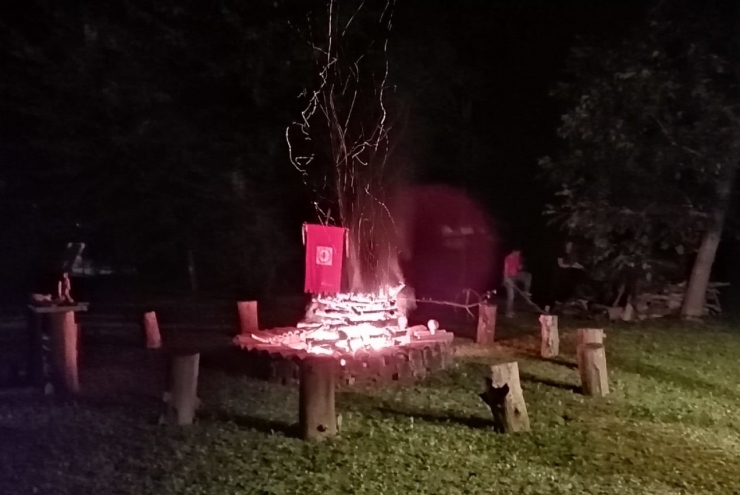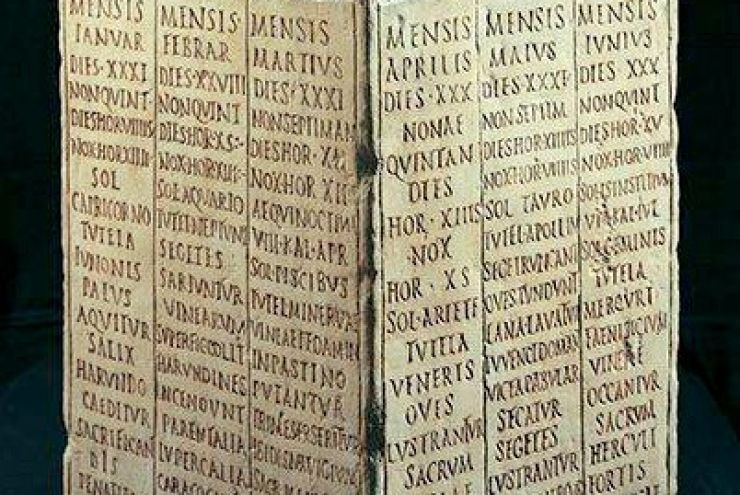About the ancient settlements of the Sikels outside of Sicily (Sikelia) and therefore in the peninsular context, I want to remember first, as Jean Bérard did in his monumental book La colonisation grecque de l’Italie et de la Sicile dans l’antiquité, ed. 1941 (which I used and abused of the good italian translation, La Magna Grecia …, ed. 1963), that first Pausanias and then Dion Crisostomus spoke of the hill at the gates of Athens which took the name Sikelia[1]. But let us not get carried away by the desire to make strange conjectures to draw false conclusions, since the name must have almost recent origins. And on this, both I, the writer, and J. Bérard show unanimous thought. As well as for Naxos, the Euboic Sicilian colony, which according to some ancient historians was founded by those Hellenes of Ionian lineage led by the Athenian Tucles/Teocles, it is said by others that the first inhabitants of an island (this time the Aegean Naxos) were Thracians; and those ones arrived there following their king named Sikelòs (the same name of the legendarian leader of the Italic Sikels in their escape from Rome to Enotria). This has come to the point of relating this tradition with the name of ‘’Little Sicily’’, which was given to the Sicilian Naxos colony in hounor of this Thracian king. And that seems completely unfounded to me, always in line with J. Bérard. The presence of the Sikels in central Italy, especially in Lazio, is instead attested by numerous and more consistent testimonies. There is, as already mentioned, Antiochus who linked the Sikels to the lineage of the Enotrians, Italians (Italo’s tribe) and Morgetians. Antiochus told the story about Sikelòs/Siculus who came from Rome. Dionysius of Halicarnassus, as we have seen, in many passages of Roman Antiquities, tells that the Sikels were the first native barbarians of Lazio and of the future Rome and that he knows nothing about their previous period. Then Lazio was occupied by the Aborigines (the Proto-Latins of the Terramare Culture), who with the help of the Pelasgians -wrongly considered the Etruscans- would have driven out the Sikels; and then, the Sikels, after their settlement in Enotria, chased away to the South, ending up to cross the sea and arriving to Sicily.

Thus the Aborigines settled in an area extended from the Tiber river (at that time Albula[2], a river that still flows crossing Rome) to the Liri river (Garigliano) and, in the time of the Trojan War, they took the name of Latini, from their king named Latinus. Dionisius still informs us that the Sikels occupied various regions of the peninsula and that their passage is testified by various toponyms: Cenina and Antemne, placed in Lazio, would have been fonde by Sikels, before passing to the Aborigines, i.e. the Latini, the Romans forefathers; but also Falerii and Fescennino would have been Sikelian foundations before becoming pelasgic. Thus also the Pelasgians Agilla-Cere (Cerveteri), Pisa, Saturnia and Alsio, all in Toscana, were originally Sikelian settlements. And in his time, he continues, there was in Tibur (Tivoli), another Sikelian foundation in which the Aborigines chased the Sikels, a neighborhood called Sikulus. Solinus, on the other hand, refers to the Sikulus district of Tivoli, however, speaking of ancient Sikanian populations, and the Sikans were included by Pliny in the list of peoples that made up the confederation of Monte Albano, still sited in Lazio; and they are also mentioned in various passages of the Aeneid, in which reference is made to the veteres Sicani ‘’the ancient Sikans’’, who fight alongside the Aurunci, Rutuli, Sacrani (the first two of Ausonian stock then Proto-illyrian, the last one from Sabinian stock then Osco-Umbrian) and the Argive youth (from hellenic stock), having had in the distant past, at the end of the Gold Age (the Age of Saturn), a bloody dispute with the Proto-Illyrian Ausonians who arrived there from the South and before that from the Balkans. Aulus Gellius and Macrobius mentioned Sikans, Auruncians and Pelasgians as the oldest inhabitants of the Italian peninsula. But all these ancient traditions that reach up to the imperial time only create a lot of confusion, to the point that Johannes Lidus considered the Etruscans as Sikans. As for the Sikans mentioned in the Virgil’s Aeneid, the good Jean Bérard thought (and wrote) that Virgil referred to the inhabitants of Ficana, a city that stood on the right bank of the Tiber, not far from Ostia. The Sikans, the ancient ones (veteres), who fight in the army of Turnus, king of the Rutuli of Ausonian lineage (and Rutuli means literally ‘’those red haired’’), according to him would be in the Virgil’s text only an error of textual transcription, a fault to be blamed on the scribes, from whom, by mistakenly writing Sicana and the Sicani for Ficana and Ficani (as it was so easy changing F for S), the whole ‘’tradition’’ of error and bad interpretation would be born. But what Jean Bérard has argued is absolutely unacceptable. The Sikels thus originally inhabited central Italy at the time when the main cult was tributed to the God Saturn, where the Pelasgians later arrived following the consultation of the Oracle of Dodona, in Epirus, Northern-West of Greece.Varro explains, in fact, the affinity between the Sikels language and Latin, with the fact that the Sikels first lived in Lazio; while Festus tells us of the Sikels fleeing together with the Ligurians of the Septimontium (area characterized by seven hills or mountains, the ones were Rome rised) when the Sacrani (or Sabini) arrived. Servius traces the Sikels from Sicily to Rome and Solinus speaks of them as one of the most ancient peoples of Italy, together with Aborigines (the Proto-Latini coming from the central northern Italy, from the area of Terramare Culture), Auruncians (Ausonians, of which the Rutuli were a further division), Arcadians and Pelasgians, attributing to the Sikels themselves other foundations, such as Ariccia and Gabi, still placed in Lazio; also pointing out, and recalling the news of Pliny, the presence of the Sikels in Ancona and in the Piceno region[3], in the centre of Italy, as well as the Illyrian population of the Siculoti in the Balkans[4], who were direct descendants of the Balkanic Sikels and not of the peninsular Sikels or those ones even settled in Sicily (speaking of course of the same ethnic group). But the colonies of the Piceno, of which Pliny speaks, were really foundations of the Sikels of Sicily, since Dionysius the Elder, during the period of Syracusan expansion in the peninsula, founded some colonies in that area in which he had some Sikels settled. Servius also informs us that the latin city of Crustumerium would be only a deformation of Clytemnestrum, a name derived from that of the Siculus’ wife. According to Cato, however, the Sikels of southern Italy had come from Greece, linking them to the Enotrians, before the Trojan War and Dionysius derived from it that they were therefore those Arcadians who first arrived in the Ionian Sea led by the Lycaon’s son, Enotrus. But what did Cato the Censor indicate for Greece? He obviously meant not only Hellas, but also a large part of the Balkans, the peninsula beyond Greece too. And, even, Dionisius comes to consider the Aborigines the pre-Hellenic Lelegi, considered ‘’Pelasgians’’ for their long wandering, from which he draws an absurd etymology from the term Aborigenus, and who for this very reason were rescued by the Pelasgians themselves in driving out the Sikels from Lazio. But here, as we read, there is only a great confusion between historical data placed side by side in an erroneous way and wrapped in pure fantasy. However, this mass of legendary data on the Pelasgians can be found both in Pausanias’ and in Strabo’s texts, who pause to explain the ‘’Pelasgian’’ wall of Athens, about the long wandering of the Pelasgians in the Mediterranean Sea, to the point of being defined as the Pelargoi, i.e. the ‘’storks’’.These data, taken from the Tradition, tell of continuous journeys between Italy and Greece by the Pelasgians in search of a land where they can found their own civilization; so Dionysius of Halicarnassus, contemporary of Strabo, but much earlier than Pausanias, draws his stories from Myrsilus of Metimna, who speaks of the ‘’Pelargian’’ walls of Athens erected by the Tyrrhenians, who took the name of ‘’Pelargoi/Pelargians’’, i.e. ‘’the storks’’, when they migrated and dispersed in other countries. And here a simple exegesis can be conducted: is it not clearly the migration of the Tyrrhenians from the coasts of anatolian peninsula in ancient times, perhaps surviving in ancient narratives at the time of the descent of the Ionians in Hellas? Yes, it is very probable, but there must never be confusion between the Pelasgians, Proto-Illyrians, and the Tyrrhenians, Indo-Europeans of another stock (the anatolian branch of the Indo-Europeans). The pre-Greek/Helladic culture has always been Indo-European, never ‘’pre-Indo-European’’, and it was precisely the one that the Hellenes found already at the height of its development, namely that of the Lelegi and Pelasgians, and in certain areas of the Tyrrhenians. It is clear that the Ionians, Aeolians and Achaeans built precisely on the sites where the ancient Helladic community of pre-Hellenic Indo-European populations (and not ‘’Mediterranean/Anarian’’ = ‘’not Aryan’’) thrived. In fact, in the Cyclades the Greeks found the Carians and the Lelegians, where the Lelegians subjected to Carians. Dionisius gets to try his hand at a somewhat too hasty deconstruction of the term Aborigenus, making it derive from ab and ὄρος, meaning ‘’from the mountain’’, a term that led him back to the Arcadians; subsequently from a more rational ab and origin, meaning ‘’since the origin’’ or ‘’autochthonous’’, in the sense of the oldest people in Italy, therefore in total contrast with the Pelasgians, who, being the ‘’Pelargians’’ and then ‘’the storks’’ or ‘’travelers’’, were not indigenous. Lycophron used instead the term Βορείγονοι, meaning ‘’they who came from Borea’’or better saying ‘’they who came from the North’’, i.e. the Hyperborean, referring to the Ausonians, calling Ausonia any part of Italy, and followed in this by the may of Roman poets; while for Dionysius of Halicarnassus, Italy would have been called in ancient times by the Greeks Ausonia or Hesperia and Saturnia by the natives (the Proto-Latini), and again the Tyrrhenian Sea would have been called Mare Ausonium before the arrival of the Tyrrhenians. For Polybius and Strabo, who draws much informations from the first, the Ausonium Sea is the sea of Sicily, that is the Ionian instead. However these are always late news. The old Hecateus indicated the Ausonians as the inhabitants of Campania and their foundation was Nola and according to Festus they were settled in the region of Cales (Calvi) and Benevento. Appianus says that Siponto was a city of the Ausonians and Hellanicus that the Ausonians are the Sikels driven out by the Iapigians who settled in the Apulian territory. Pindar also called the Locri region Ausonia and it was said that the founders of Reggio had landed in Ausonia; and finally Cato knew of the existence of a center founded by Aurunci (the Ausonians according to the Romans) between Reggio and Medma: the very ancient settlement of Tauriano, before the Achaean colonization which took place after the fall of Troy. Thus Liparus, King Ausonius’ son, eponym of the Ausonians, forced by his brothers to leave Italy, embarking with his soldiers on long ships, would have reached the Lipari islands. Diodorus says that the islands were reached by Aeolus from Greece together with his companions, who married Ciane, Liparus’ daughter, succeeding the latter as king of the archipelago. Since Liparus, now old, wanted to see Italy again, Aeolus helped him to settle in the Sorrento region, where he died after having reigned gloriously, paying him all the honors that a hero deserves. Among the descendants of Aeolus, according to the legend, one reigned on the Italian coast up to Reggio, the other two respectively on Sikels and Sikans, respectively on the East and West sides of Sicily. Another legend saw Ausonus as brother of Latinus, sons of Ulysses and Circe. Polybius distinguished the peoples of Campania into Opicians and Ausonians, while Antiochus and Aristotle consider them a single people. But the Opicians were a tribe belonging to the Oscan lineage and Strabo claims that the Oscan language was related to Latin, which is undoubted, since these two Indo-European languages descended from the same Indo-European macro-group (proto-Latin/Osco-Umbrian / Paleovenetian), settled in a remote past, since the Neolithic age, between the middle courses of the Renus and Elba rivers (hydronym to be compared with that of Albula river, now better know as Tiber river[5]), beyond which there was the Proto-Illyrian macro-group, at which belonged Sikels and Ausonians, being both the cultural and dialectal substratum of the up-coming strong people of Rome.
Alessandro Daudeferd Bonfanti
NOTE
[1] See therefore also: Strabo, Geography, Book I, 3, 18; Suida, Lexikon, the word ἓμβαπoς; Pliny, Naturalis historia, Book II, 201. Reading these sources, the Attic peninsula of Piraeus, located South-West of Athens, in the sinus Saronicus, a demos belonging to the Hippotoondide’s tribe, which from the fifth century. B.C. it was the port of Athens to replace the Falerus, in ancient times it would have been separated from the mainland and therefore an island, extended to Moschatus and the hill of Sikelia, near Athens. And this also explains the origin of the name of Piraeus, in ancient Greek Πειραιεύς > Πειραεύς > Πειραιός (in Latin Piraeus), deriving in turn from πέρας ‘’beyond’’.
[2] Virgil, Aeneid, book VIII, vv. 322-332.
[3] Pliny the Elder, Naturalis Historia, book III, 13, 111.
[4] Pliny the Elder, Naturalis Historia, book III, 22, 141.
[5] Virgil, Aeneid, book VIII, vv. 322-332.
















